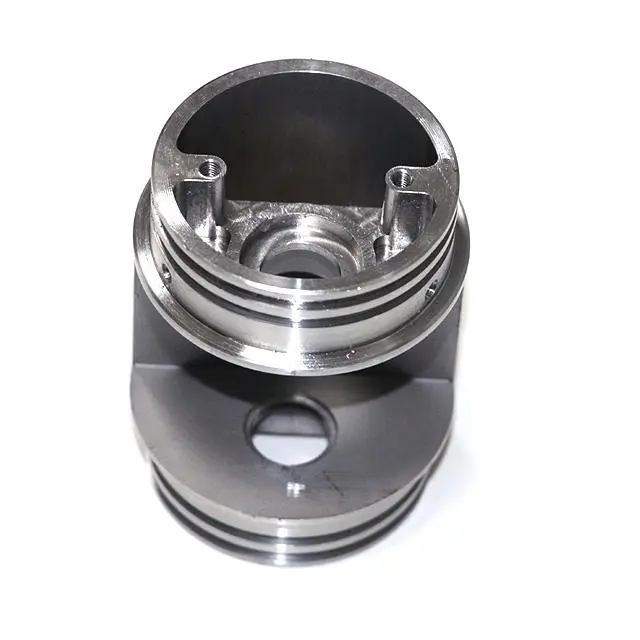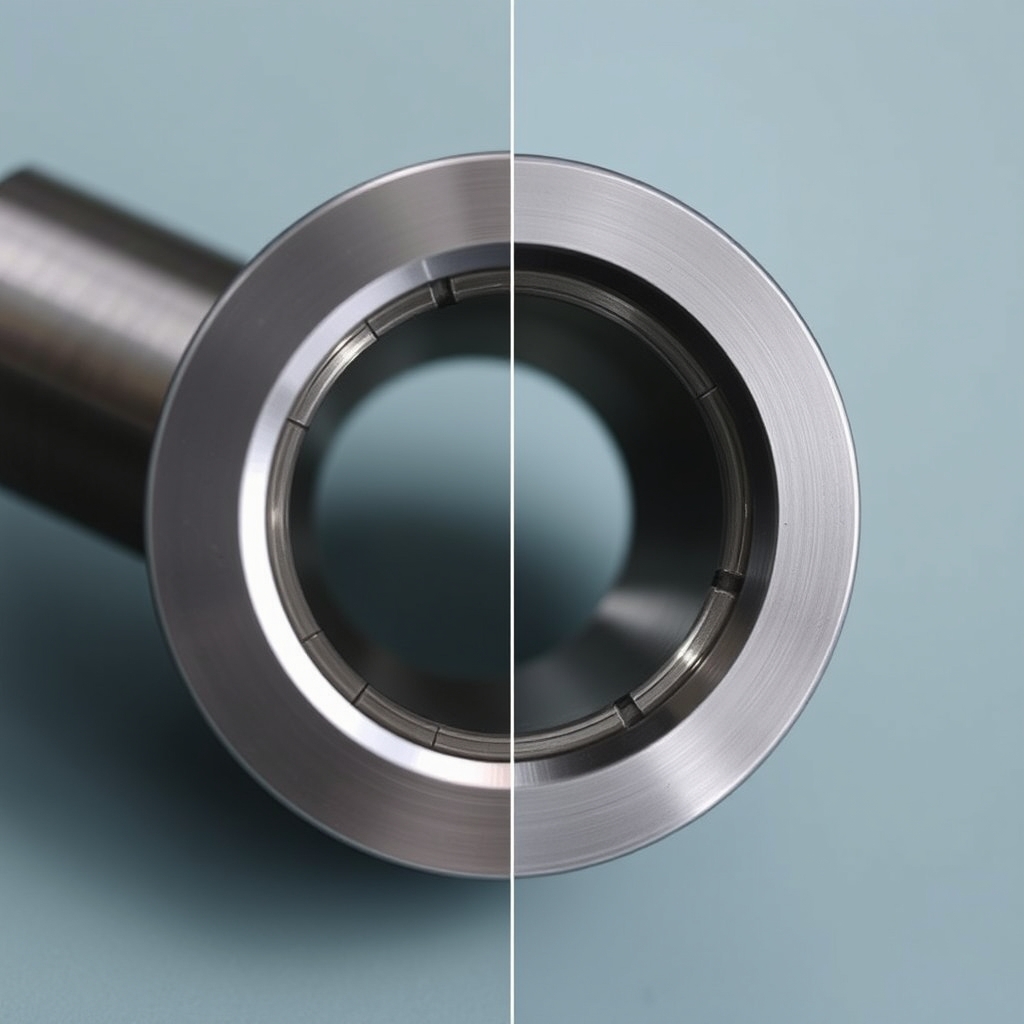
- +8615586668226
- [email protected]
- Nº 30, Hongbang Industrial Park, Shenzhen

Tolerancia in engineering is the permissible limit or limits of variation in a physical dimension. It’s a critical aspect of fabricación that defines the allowable deviation from a nominal value. Tolerancia ensures that parts fit together, operate correctly, and meet the functional requirements of the design. In precision engineering, where every micron counts, understanding and applying the correct tolerancia es primordial.
Tolerancias are not just numbers on a drawing; they represent a balance between precisión, cost, and functionality. Specifying tight tolerancias can increase manufacturing costs, while overly loose tolerancias may compromise the product’s performance. As a leading provider of Servicios de fabricación CNC, we understand the delicate balance required to achieve optimal tolerancia for each project. We have a deep understanding of many industries, and we specialize in solutions tailored to the unique needs of industries such as Aeroespacial, Automocióny Productos sanitarios.
Tolerancia unilateral es un type of tolerance where the variation from the nominal dimension is permitted in only una dirección, either positive or negative. For example, if a shaft’s nominal diameter is 25mm with a tolerancia unilateral of +0.05mm, the allowable diameter can range from 25mm to 25.05mm. If the tolerancia were -0.02mm, the shaft could range from 24.98mm to 25mm.
Este type of tolerance is often used when a dimension can only deviate in one way without causing functional issues. Consider a hole that must be at least a certain size to ensure clearance for a fastener. In such cases, specifying a tolerancia unilateral ensures the hole is never too small. Our expertise in Mecanizado CNC allows us to achieve precise tolerancias unilaterales, ensuring components meet strict requirements.
Tolerancia bilateral allows variations in both directions from the nominal value. For instance, a dimension of 25mm ±0.03mm means the allowable size can range from 24.97mm to 25.03mm. The deviation can be equal or unequal, such as +0.04mm/-0.02mm, which is known as an unequal bilateral tolerance o unequally disposed tolerance.
Bilateral tolerances are common when a dimension can fluctuate around a central value without affecting the part’s function. A classic example is the length of a non-critical component where slight variations in either direction are acceptable. Our state-of-the-art CNC facilities are equipped to handle complex bilateral tolerancing requirements with unmatched accuracy.
El principal difference between unilateral and bilateral tolerances lies in the direction of the allowable variation. Tolerancia unilateral restricts variation to una direcciónmientras que tolerancia bilateral allows variations in both the positive and negative directions. Understanding these differences is crucial for selecting the appropriate tolerance type for a specific application.
Elegir entre unilateral or bilateral depends on the functional needs of the part. For example, if two mating parts must fit with a specific clearance, tolerancias unilaterales might be used to ensure they always assemble correctly. Bilateral tolerances, on the other hand, are suitable when some play is acceptable or even desirable.
En zona de tolerancia defines the límites superior e inferior within which a feature’s actual size or location must fall. For tolerancia unilateralEl zona de tolerancia extends from the nominal value in one direction. For tolerancia bilateral, it extends in both directions.
Visualizing the zona de tolerancia is essential for understanding how tolerancias affect a part’s geometry. Imagine a target; the bullseye represents the nominal value, and the rings around it represent the zona de tolerancia. Una mayor zona de tolerancia means a bigger target, making the part easier and less expensive to manufacture. We leverage advanced Mecanizado CNC techniques to ensure all features stay within tolerance, no matter how complex the part.
Geometric dimensioning and tolerancing (GD&T) is a system for defining and communicating engineering tolerancias. It uses a symbolic language on engineering drawings and computer-generated three-dimensional solid models that explicitly describe nominal geometry and its allowable variation.
GD&T goes beyond basic dimensioning y tolerancing by defining the function of a part and how its features relate to each other. It includes controls for form, orientation, location, and profile, ensuring a comprehensive definition of the part’s geométrico requirements. Our team is proficient in GD&T basics, ensuring clear communication and precise execution of your designs, for more info check our Soluciones CNC.
Seleccionar el tolerance type involves a deep understanding of the part’s function, proceso de fabricación, and cost considerations. Ask yourself: Does the feature need to fit with another part? Is there a minimum or maximum size requirement? What level of variation is acceptable?
Considere la fabricación implications as well. Tight tolerancias often require more precise, and therefore more expensive, fabricación métodos. Tolerancias unilaterales might be necessary for features that must fit together with a specific clearance or interference. Bilateral tolerances can offer more flexibility and potentially lower production costs when slight variations are permissible. Our servicios de fabricación cover a wide range of capabilities.
| Característica | Tolerance Type | Reasoning |
| Shaft Diameter | Unilateral (+0.02mm) | Ensures minimum clearance with a mating hole |
| Hole Diameter | Unilateral (-0.03mm) | Guarantees a maximum interference fit with a shaft |
| Ancho de ranura | Bilateral (±0.05mm) | Allows for slight variations in width without affecting the insertion of a mating part |
| Plate Thickness | Bilateral (+0.1mm/-0.05mm) | Permits more variation on the positive side while maintaining a minimum thickness |
CNC (Computer Numerical Control) machining plays a vital role in achieving and managing precise tolerancias. Máquinas CNC, guided by computer programs, can produce parts with high accuracy and repeatability, making them ideal for tight tolerancia aplicaciones.
Mecanizado CNC offers several advantages in tolerancia management:
Precisión: Máquinas CNC puede lograr tolerancias as tight as ±0.001 inches (0.025 mm) or even better, depending on the machine and the material.
Coherencia: Once a CNC program is optimized, it can produce identical parts with minimal variation, ensuring consistent tolerancia control.
Flexibilidad: Mecanizado CNC can handle a wide range of materials and complex geometries, making it suitable for various tolerancia requisitos.
Eficacia: Máquinas CNC can operate 24/7, reducing lead times and improving overall production efficiency.
Control de calidad es la columna vertebral de tolerancia management. It involves a series of inspections and measurements to ensure that manufactured parts meet the specified tolerancias. Effective control de calidad processes are essential for maintaining consistency and preventing costly errors.
Control de calidad en tolerancia management includes:
Dimensional Inspection: Using precise measuring tools like micrometers, calipers, and coordinate measuring machines (CMMs) to verify that part dimensions son within tolerance.
Process Monitoring: Continuously tracking the fabricación process to identify potential deviations early on.
Statistical Process Control (SPC): Applying statistical methods to monitor and control the fabricación process, ensuring it remains stable and capable of meeting tolerancia requisitos.
Ofrecemos mecanizado de precisión service for all customers.
Applying tolerancias in engineering design requires a systematic approach. Start by identifying the critical features and their functional requirements. Then, determine the appropriate tolerancia values based on factors like fit, function, and fabricación capacidades.
Here’s a step-by-step guide to applying tolerancias:
Define Nominal Dimensions: Establish the ideal size of each feature.
Identify Functional Requirements: Determine how each feature interacts with other parts.
Select Tolerance Type: Elija entre unilateral y bilateral based on functional needs.
Determine Tolerance Values: Assign specific values based on industry standards, material properties, and fabricación capacidades.
Document Tolerances: Clearly indicate tolerancias on engineering drawings using proper notation.
Remember, tolerancia specification is not just about assigning numbers; it’s about understanding the implications of those numbers on the final product. Our servicios de mecanizado are designed to ensure that all designs are executed with the utmost attention to detail.
What is the main difference between unilateral and bilateral tolerances?
El principal diferencia es que tolerancia unilateral sólo permite variaciones en una dirección del nominal value, while tolerancia bilateral permits variations in both positive and negative directions.
Why are tolerances important in engineering?
Tolerancias are crucial because they define the allowable limits of variation in a dimension, ensuring that parts fit together correctly, function as intended, and meet the design requirements.
How does CNC machining help in achieving tight tolerances?
Mecanizado CNC uses computer-controlled machines to produce parts with high precision and repeatability, making it ideal for achieving tight tolerancias that might be difficult or impossible to reach with manual methods.
What is a tolerance zone?
A zona de tolerancia is the range between the límites superior e inferior de un dimension, within which the actual size or location of a feature must fall to be considered acceptable.
What is the purpose of geometric dimensioning and tolerancing (GD&T)?
GD&T provides a standardized way to define and communicate engineering tolerancias, specifying not only the size and location of features but also their form, orientation, and relationship to other features.
How do I determine the appropriate tolerance value for a specific feature?
Determinar el derecho tolerancia value involves considering the feature’s function, how it interacts with other parts, the proceso de fabricación being used, material properties, and industry standards.
Tolerancia is a fundamental concept in engineering and fabricación, defining the allowable variation in a physical dimension.
Tolerancia unilateral permits variation in only one direction, while tolerancia bilateral allows variations in both positive and negative directions.
Comprender la differences between unilateral and bilateral tolerances is crucial for selecting the right tolerance type for a specific application.
En zona de tolerancia defines the range within which a feature’s actual size or location must fall.
Geometric dimensioning and tolerancing (GD&T) provides a comprehensive system for defining and communicating engineering tolerancias.
Mecanizado CNC plays a vital role in achieving and managing precise tolerancias, ofreciendo precisión, consistency, flexibility, and efficiency.
Control de calidad is essential for ensuring that manufactured parts meet the specified tolerancias.
Applying tolerancias in engineering design requires a systematic approach, considering functional requirements, fabricación capabilities, and cost implications.
Dirección
No.30, Hongbang Industry Park, Shenzhen
Correo electrónico
[email protected]
Teléfono
+86 15586668226
Conozca las últimas tendencias y datos sobre fabricación CNC en nuestro blog.
Shenzhen Runkey Precision Technology Co. Ltd, una filial del Grupo Tensun, es su solución integral de confianza para la fabricación personalizada de prototipos para la producción.la transformación de su idea en realidad con los recursos de fabricación digital, procesos simplificados, orientación de expertos, plazos acelerados, y la calidad sin concesiones.
©2024. CNC Fabrication Todos los derechos reservados.